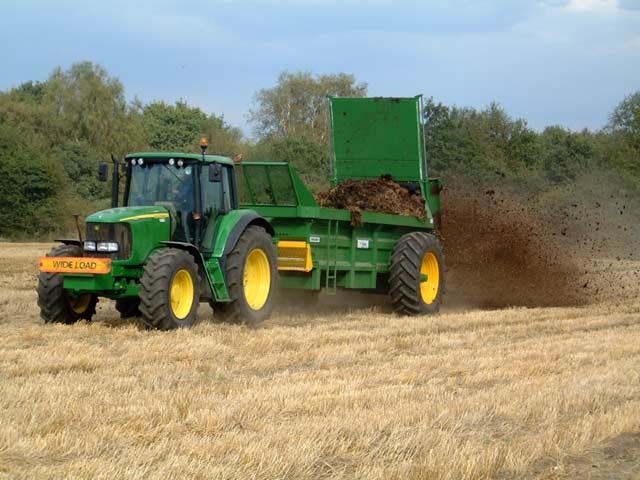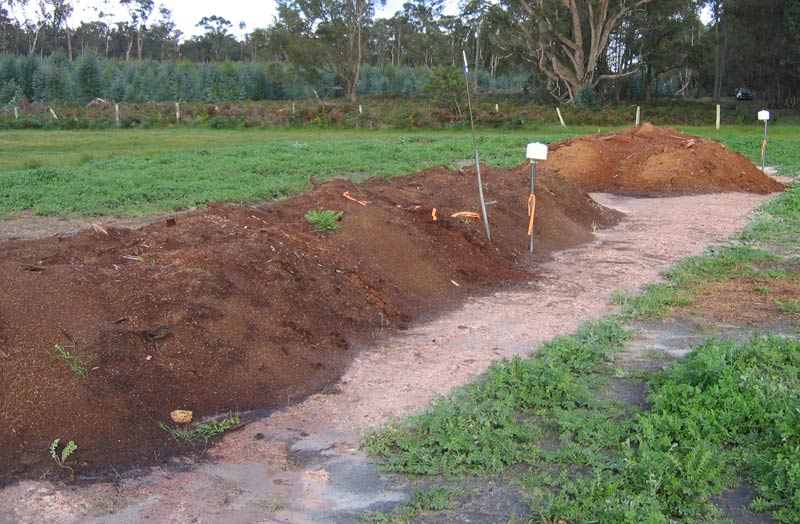Litter Waste Management

Litter spreader
Litter Waste Management
There are many different waste management options for litter including land application of litter as an organic fertiliser. Overseas broiler industries have had restrictions placed upon them regarding this practice due to over application of litter which led to pollution. Fortunately in Australia, there are greater agricultural lands that can responsibly utilise litter and growers are generally less concentrated compared to overseas. Therefore, poultry waste managers can rely on land application of litter as a sustainable disposal method for the foreseeable future. That being said, the industry considers all other waste management options and their ability to value add to the litter resource.
Litter re-use
One solution to dealing with used or spent litter, widely adopted in the United States of America, is to re-use it for subsequent batches of broilers. While there are cost-saving benefits from not entirely replacing spent litter with new bedding material for each batch, there is also a bonus in that the eventual multi-batch litter makes for an improved compost due to its higher proportion of nutrients from greater proportion of chicken excreta to bedding material in the litter.
If there are concerns about carry over of disease organisms in re-used litter, methods to reduce pathogen load developed under Poultry CRC project Methods to quantify and inactivate viruses in poultry litter can be accessed via the following links. These include standard procedures for in-shed pasteurisation of litter between batches and the LitterHeatMap model to predict and optimise temperatures in litter being pasteurised by heaping.

Composting broiler litter
Closed-loop systems
An important concept for a waste manager is a closed-loop system where outputs from one industry become inputs for another. Therefore, pollution could be defined as a resource or raw product that has an adverse effect on the environment which has not been transformed into another useful product. Land application satisfies this requirement as litter is transformed into plants while soil structure is improved by increasing soil organic matter. Composting litter before applying to land can enhance both plant growth and soil structure.
Composting
Composting is the aerobic microbial breakdown of organic matter, usually incorporating a thermophilic phase. The adoption of composting systems for poultry waste has received attention due to its ability to reduce litter volume, dispose of carcasses, stabilise nutrients and trace elements and reduce pathogens. Agronomic benefits of composted litter include increased plant available nutrients and humic residues. The immobilisation of nitrogen (N) and phosphorus (P) during composting reduces the risk of soluble N and P entering aquatic systems via surface flow and leaching. Composting could also offer both on-site and off-site solutions to litter utilisation and potentially enhance a closed-loop system for the Australian poultry industry.
Direct combustion
Direct combustion and incineration are recognised as efficient options for generating renewable energy and fertiliser grade ash from litter and could potentially close the nutrient loop for the poultry industry. There are currently successful large scale off-site electricity utilities operating in the UK that primarily use litter as a fuel. For on-site electricity and heat generation, smaller direct combustion systems are being researched and developed, and if commercialised, could supply Australian broiler growers with both environmentally sustainable waste disposal and energy.
Anaerobic digestion
Anaerobic digestion could also promote a closed-loop system for the poultry industry, as the process could degrade and stabilise a wide range of organic poultry wastes including litter. This could potentially produce saleable methane and digestate. Methane could be captured after digestion, the gas then cleaned and then used as renewable energy, while the digestate could be utilised as a soil improving agent with potentially good fertiliser attributes.
Ethanol production (biofuels)
It is also likely that poultry litter could be suitable for lignocellulosic alcohol production. If this technology is viable, this waste could supply biofuels to Australia and potentially reduce the demand for grain destined for ethanol production.
Vermiculture
The use of specially selected earthworm species to degrade waste is known as vermiculture. This technique has been widely adopted by home gardeners to utilize green wastes and vegetable scraps. Vermiculture has the potential to produce both humic rich vermi-compost (vermicast) and meat meal (vermimeal) from litter. Traditionally, the vermiculture process has primarily been adopted to produce vermicast, a recognised valuable organic fertiliser.
Further information
- Kelleher, B. P., Leahy, J. J., Henihan, A. M., O’Dwyer, T. F., Sutton, D. & Leahy, M. J. (2002). Advances in poultry litter disposal technology – a review. Bioresource Technology 83, 27–36.
- Turnell, J.R., Hinch, G.N. and Faulkner, R.D. 2007, ‘Recent advances in Australian broiler litter utilisation’, World’s Poultry Science Journal, vol. 63, pp. 223-231.



